Key takeaways:
- Wildlife documentation is essential for understanding ecosystems and can inform conservation efforts by revealing trends and the importance of often-overlooked species.
- Effective tools, like journals and identification apps, enhance the experience of documenting wildlife and foster a deeper connection to nature.
- Patience, respect for wildlife, and thoughtful documentation enrich the observation experience and help articulate the emotional connection to nature.
- Sharing observations through community engagement and citizen science projects encourages collaboration and raises awareness for wildlife conservation.
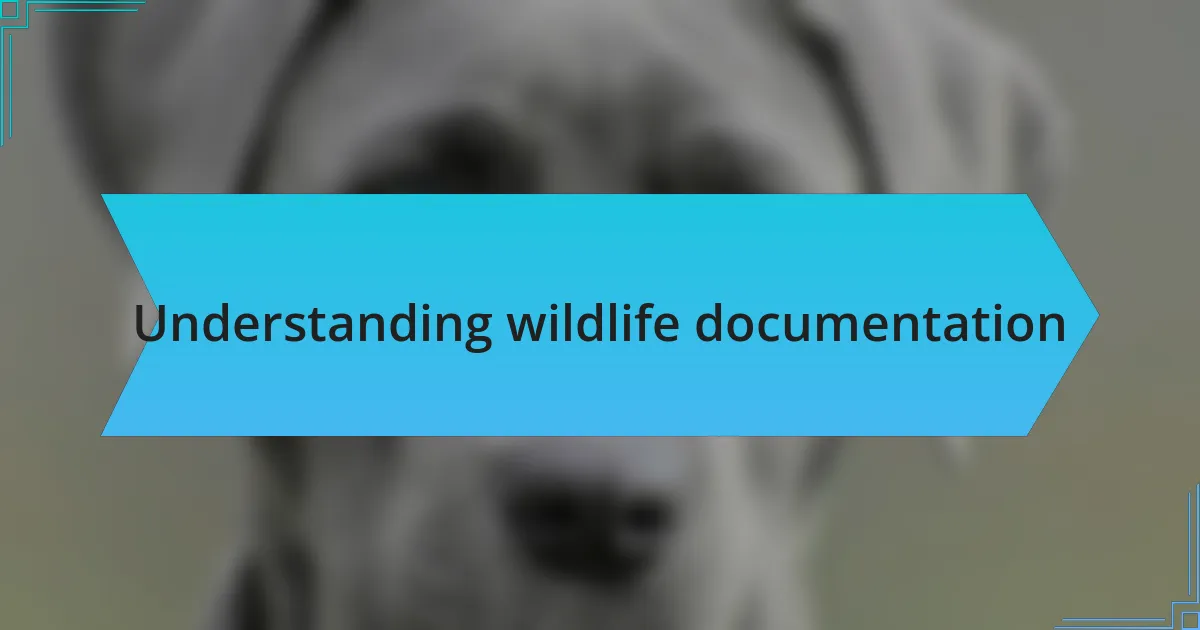
Understanding wildlife documentation
Wildlife documentation involves recording data about animal species, their behaviors, and their habitats. I remember the first time I spotted a rare bird while hiking. Capturing that moment felt like a small victory, a way to contribute to the appreciation of biodiversity in my area.
As I ventured deeper into this process, I realized how crucial it is to understand the ecosystems at play. Have you ever stopped to consider how interconnected our local wildlife really is? For instance, when I noted the decline of a particular species, it prompted me to research how that might affect other local fauna, revealing the delicate balance of nature.
I find that effective wildlife documentation goes beyond just jotting down observations. It’s about feeling the pulse of nature, listening to its stories. I once spent an entire afternoon observing a family of deer, noting their interactions and routines. That experience drove home the message that each observation is a snapshot of life, revealing the intricacies of animal behavior and their adaptations to our changing environment.
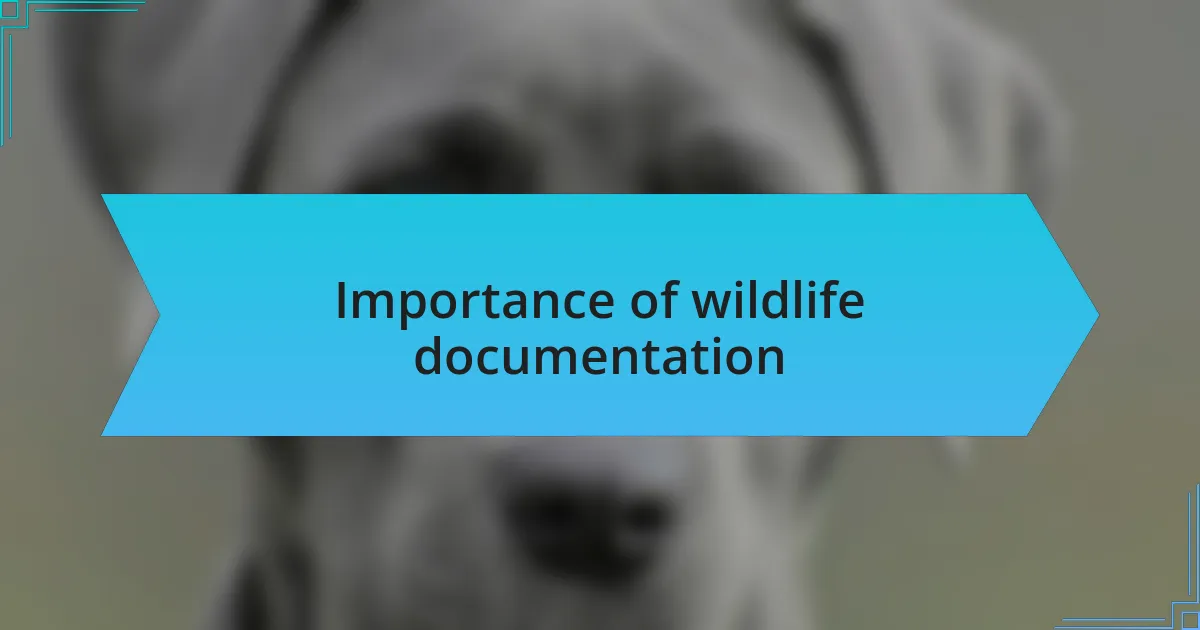
Importance of wildlife documentation
Recording wildlife is not just about cataloging species; it’s a powerful tool for conservation. When I dedicated a weekend to tracking local amphibian populations, I was surprised by how documenting their presence could inform efforts to protect their habitats. How often do we overlook the small creatures that play vital roles in our ecosystem? My findings highlighted these often-ignored species and emphasized their significance in maintaining ecological balance.
Wildlife documentation helps create a narrative that connects the community to its environment. I recall organizing a local event where people shared their wildlife observations. The excitement in the room was palpable as neighbors exchanged stories of encounters with foxes and owls. Isn’t it amazing how these shared experiences can foster a sense of stewardship? It encouraged many participants to become more involved in local conservation efforts, proving that documentation can spark a community’s passion for nature.
Moreover, collecting data on wildlife populations can reveal important trends over time. For example, while conducting a year-long survey of local butterfly species, I discovered a decline in certain varieties. This realization compelled me to dig deeper into the possible causes, such as habitat loss and climate change. Have you ever considered how your observations can create awareness and drive action? It’s conversations generated by such documentation that can lead to meaningful change and help protect our invaluable wildlife.
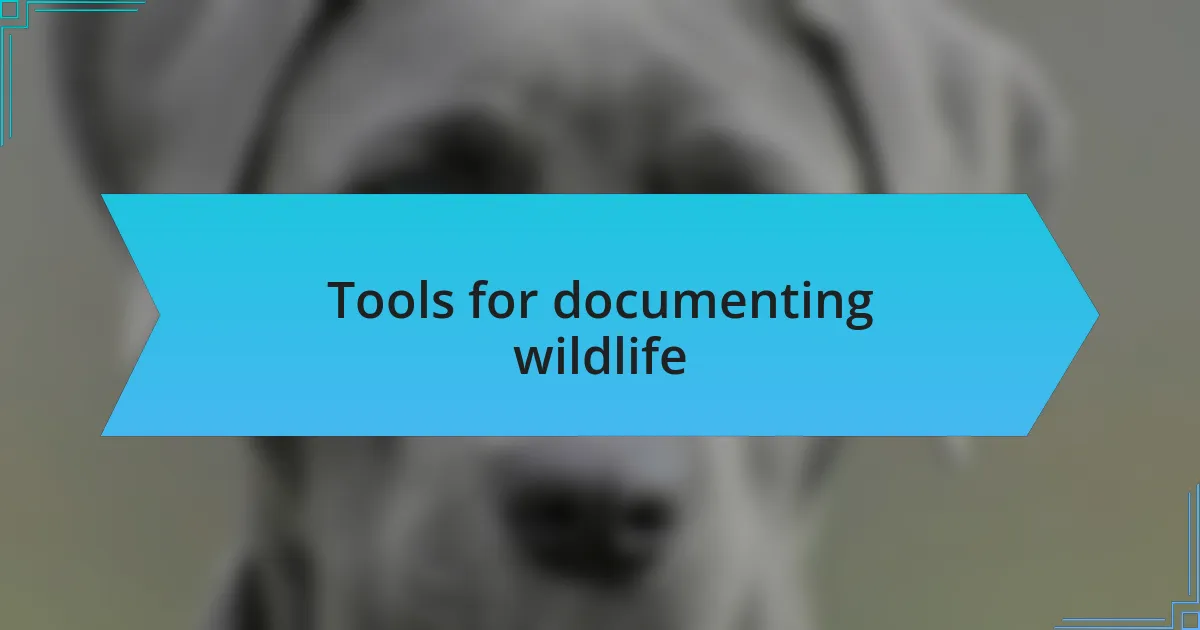
Tools for documenting wildlife
When it comes to documenting wildlife, having the right tools makes all the difference. I often carry a simple notebook and a reliable camera while exploring my local trails. I’ve found that jotting down notes about animal behavior and snapping candid shots allows me to capture fleeting moments—like the graceful leap of a deer or the delicate flutter of a butterfly. The joy in reviewing those images later can rekindle memories of those encounters, reinforcing my connection to nature.
Another essential tool is an identification app. I remember the first time I used one; I was amazed at how quickly I could learn the names of various plants and animals I came across. This technology made nature walks more engaging, transforming my curiosity into informed observations. Have you ever used an app to identify wildlife? It was like opening a treasure chest of knowledge right in front of me, deepening my appreciation for the diversity around me.
Sometimes, engaging with the community can be just as beneficial as solo documentation. I participated in a citizen science project, which encouraged locals to share their wildlife sightings. The app consolidated our data, making it a powerful resource for conservation efforts. Each ping I heard from fellow participants signaling a new discovery filled me with excitement—like being part of a larger adventure. Isn’t it rewarding to think that our collective efforts can enhance understanding and appreciation of the wildlife we share our world with?
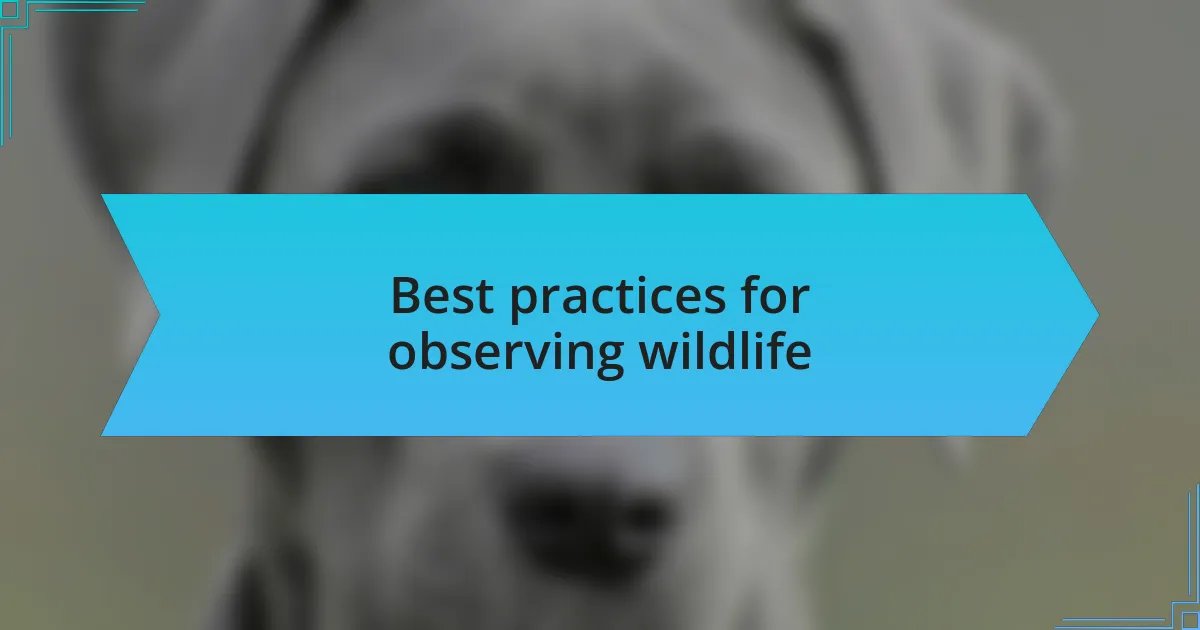
Best practices for observing wildlife
Observing wildlife requires patience and respect for their natural behaviors. I recall one particularly still morning when I sat quietly in a grove of trees, the world around me silent but alive. Through the stillness, I witnessed a family of foxes frolicking nearby, completely unaware of my presence. This taught me that patience pays off; the longer I waited, the more I saw, reminding me of the importance of blending into the environment rather than intruding upon it.
Another practice I adhere to while observing is to keep my distance. Once, while tracking a group of elk, I made sure to stay at least a few hundred yards away. This not only prevented startling them but also allowed me to capture genuine behavior as they interacted with one another. Have you ever noticed how animals behave differently when they feel secure? Maintaining space fosters a mutual respect that enriches the observation experience.
Furthermore, documenting your encounters in a thoughtful manner adds another layer of meaning to the experience. I often find myself not just noting what I see, but also my feelings during those encounters. One time, I described the exhilaration that washed over me when I spotted a rare bird; the realization that I was sharing a moment with such a beautiful creature filled me with awe. When reflecting on your observations, consider how these experiences resonate with you—what emotions surface, and what do they reveal about your connection to the wildlife around you?
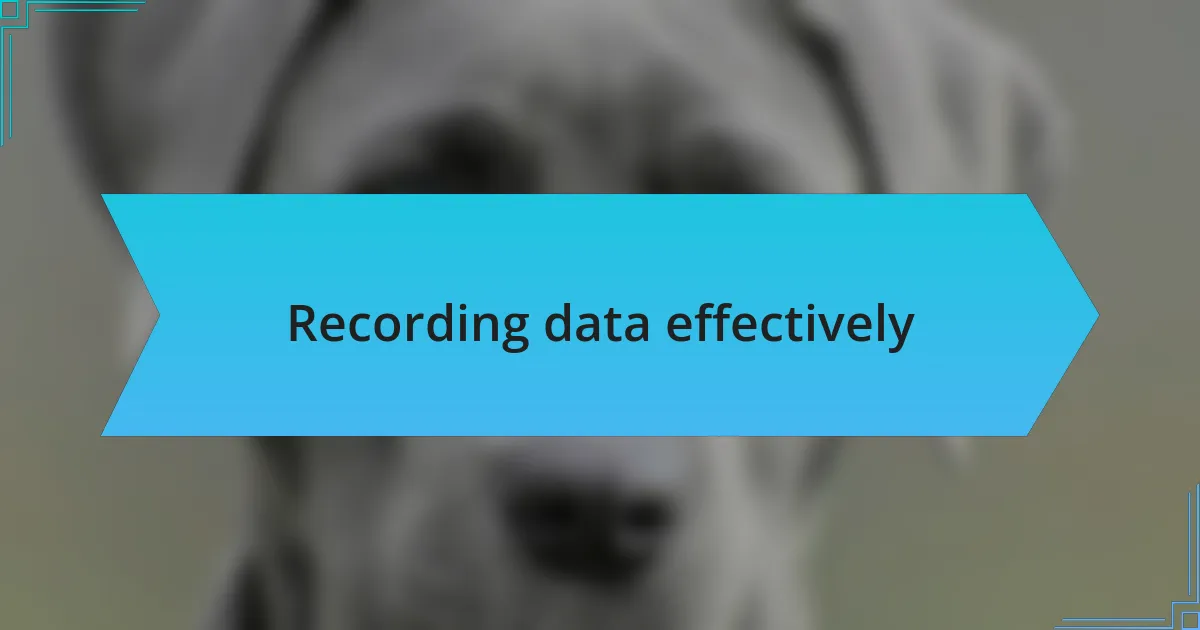
Recording data effectively
Recording data on wildlife effectively is crucial for understanding and protecting the species in our area. I’ve found that using a wildlife observation journal enhances my experience immensely. Just the other week, I jotted down not only the species I spotted but also the time of day and weather conditions, which later became invaluable as I noticed a pattern in wildlife activity. Have you ever struggled to remember the details of an encounter? Writing them down has transformed my observations into more than fleeting moments; they become part of a larger story.
Equally important is the use of digital tools. I often rely on apps designed for wildlife tracking, which allow me to catalog sightings with ease. One time, while hiking, I captured a photo of a striking hawk perched atop a branch and logged it immediately in the app. The thrill of instantly documenting that sighting, complete with GPS data, reinforced my connection to the moment. Do you embrace technology when recording nature? It can truly amplify your experience and make data collection far more engaging.
Lastly, I’ve learned that consistency is key when recording data. Setting aside regular times to review and reflect on my entries has deepened my understanding of local wildlife trends. Just last month, I revisited notes from a previous season and was surprised to see how migratory patterns had shifted. This kind of analysis not only informs my future observations but also enhances my appreciation for the wider ecological changes happening around us. How could you incorporate this practice into your own wildlife documentation?
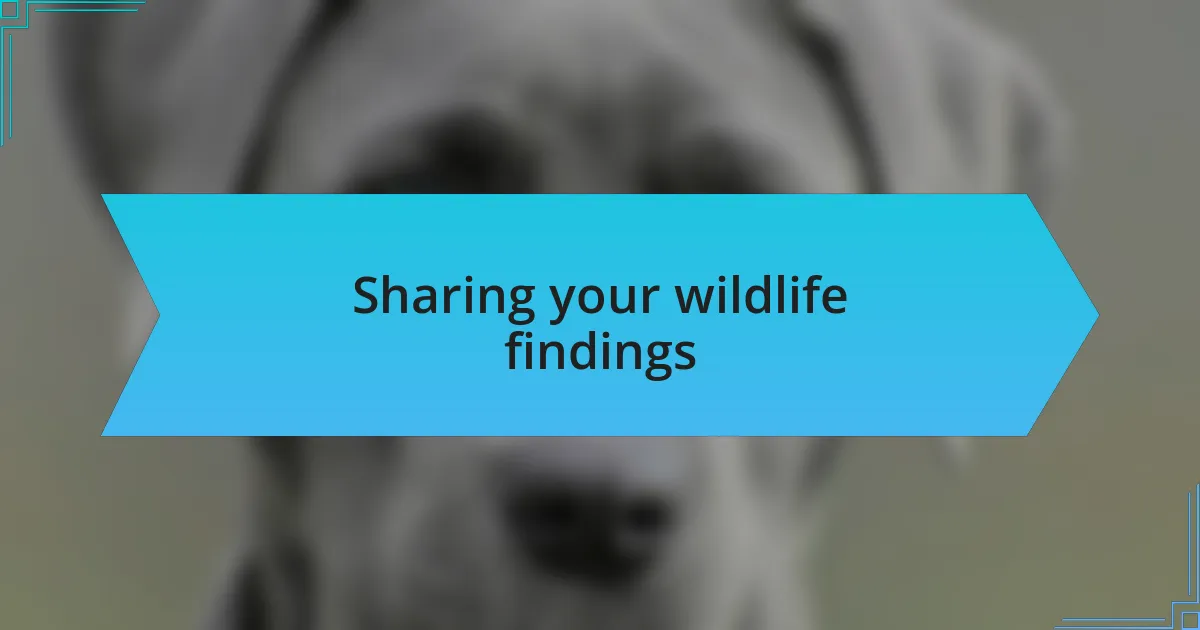
Sharing your wildlife findings
Sharing your wildlife findings plays a vital role in building a community of fellow nature enthusiasts. I’ve discovered that posting my observations on local forums or social media groups not only helps others but often sparks invigorating discussions. When I shared a photo of a curious fox I encountered last autumn, the responses flooded in with tips about their behaviors and habitat. Isn’t it fascinating how one sighting can connect so many people?
Another wonderful method I’ve embraced is participating in citizen science projects. I recently contributed my observations to a project that tracks migration patterns. Seeing how my data contributed to a broader understanding of species movement felt incredibly rewarding. Have you thought about how your findings could aid in scientific research?
Additionally, I find that creating a blog to document my experiences allows for a deeper dive into my passion for wildlife. Each post, whether about the intricacies of birdwatching or the impact of seasonal change, becomes a personal narrative that others can learn from or relate to. Through sharing these experiences, I not only document my journey but also cultivate a sense of responsibility towards our shared environment. How might you express your connection to wildlife through writing?